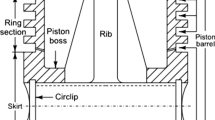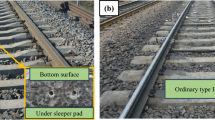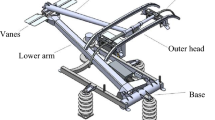Abstract
Taking the MK7-3 of USA hydraulic buffer arresting device as the research subject, the dynamical model for the shipboard aircraft arresting system is established, and the magneto-rheological (MR) damper is applied to pulley shock absorbers for shipboard aircraft block system. Due to the effect of the MR damper has not been known completely and so far MR damper model has not been defined, we use a set of characteristic test of the MR damper, through the process of parameters identification, to establish the dynamical model for the MR damper based on the Bingham plastic model. Then, the fuzzy control rules are designed, the buffer control for the pulley buffer of shipboard aircrafts is completed in touchdown moment based on MR technology. Compared with blocking device of hydraulic pulley buffer in the same condition, the simulations results show that the proposed MR pulley buffer can effectively recognize the impact energy for shipboard block system and reduce the pull peak of arresting cable. It improves significantly safety during landing of the air vehicles and lowers the risk of accidents.
Similar content being viewed by others
References
Li Jie, Yu Chuan. The aircraft carrier aircraft carrier landing equipment [J]. Modern Military, 2006 (10): 56–58 (in Chinese).
MIL-A-8863B(AS), Airplane strength and rigidity ground loads for navy acquired airplanes [S].
MIL-A-8863C(AS), Airplane strength and rigidity ground loads for navy acquired airplanes [S].
MIL-A-18717C(AS), Arresting hook installations, aircraft [S].
Department of the Air Force. Guide to mobile aircraft arresting system installation [M].Washington DC: Secretary of the Air Force Washington DC, 2000: 1–182.
Liu Gang, Nie Hong. Dynamics analysis for aircraft arresting based on absorbing aircraft kinetic energy [J]. China Mechanical Engineering, 2009, 20(4): 450–454 (in Chinese).
Jankowski L, Mikulowski G. Adaptive landing gear Optimum control strategy and improvement potential [C]// Conference on Noise and Vibration Engineering. Leuven, Belgium: International Security Management Association, 2006: 1–15.
Hu W, Werely N M. Magneto-rheological fluid and elastomeric lag damper for helicopter stability augmentation [J]. International Journal of Modern Physics B, 2005, 19(7): 1471–1477.
Ahmadian M, Appleton R J, Norris J A. Designing magneto-rheological dampers in a fire out-ofbattery recoil system [J]. IEEE Transactions on Magnetics, 2003, 39(1): 480–485.
Mikutowski G M. Adaptive impact absorbers based on magnetorheological fluids [D]. Warsaw, Poland: Smart Technology Centre Institute of Fundamental Technological Research Polish Academy of Sciences, 2008.
Duan Yuan-feng, Ni Yi-qing, Ko Jan-ming, et al. Design of MR dampers for open-loop vibration control of stay cables on cable supported structures [J]. Spatial Structures, 2007, 13(2): 58–64.
Karakas E S, Gordaninejad F, Evrensel C A, et al. Control of a quarter HMMWV suspension system using a magneto-rheological fluid damper [C]// Proceedings of the International Society for Optical Engineering. Bellingham, USA: the International Society for Optical Engineering, 2004: 204–213.
Fu Li, Xie Hua-long, Xu Xin-he. The modeling of magnetorheological fluids in advanced intelligent artificial limb [J]. Machine Tool & Hydraulics, 2009, 37(10): 15–18 (in Chinese).
Yang G, Spencer B F, Jung H J, et al. Dynamic modeling of large-scale magneto-rheological damper systems for civil engineering applications [J]. Journal of Engineering Mechanics, 2004, 130(9): 1107–1114.
Author information
Authors and Affiliations
Corresponding author
Additional information
Foundation item: the National Natural Science Foundation of China (No. 61074090), the Program for Liaoning Excellent Talents in University (No. LR2011005) and the Aviation Industry Corporation of China Innovation Funds (No. cxy2011SH)
Rights and permissions
About this article
Cite this article
Fu, L., Wei, Y., Zhou, Yk. et al. Modeling and control of the pulley buffer system of arresting cable for shipboard aircraft based on magneto-rheological fluid. J. Shanghai Jiaotong Univ. (Sci.) 17, 573–578 (2012). https://doi.org/10.1007/s12204-012-1327-4
Received:
Published:
Issue Date:
DOI: https://doi.org/10.1007/s12204-012-1327-4




